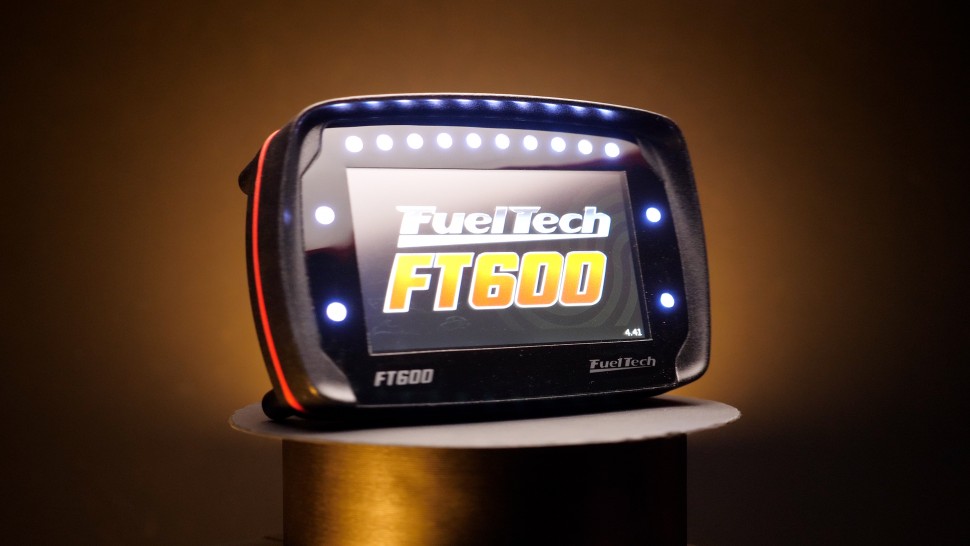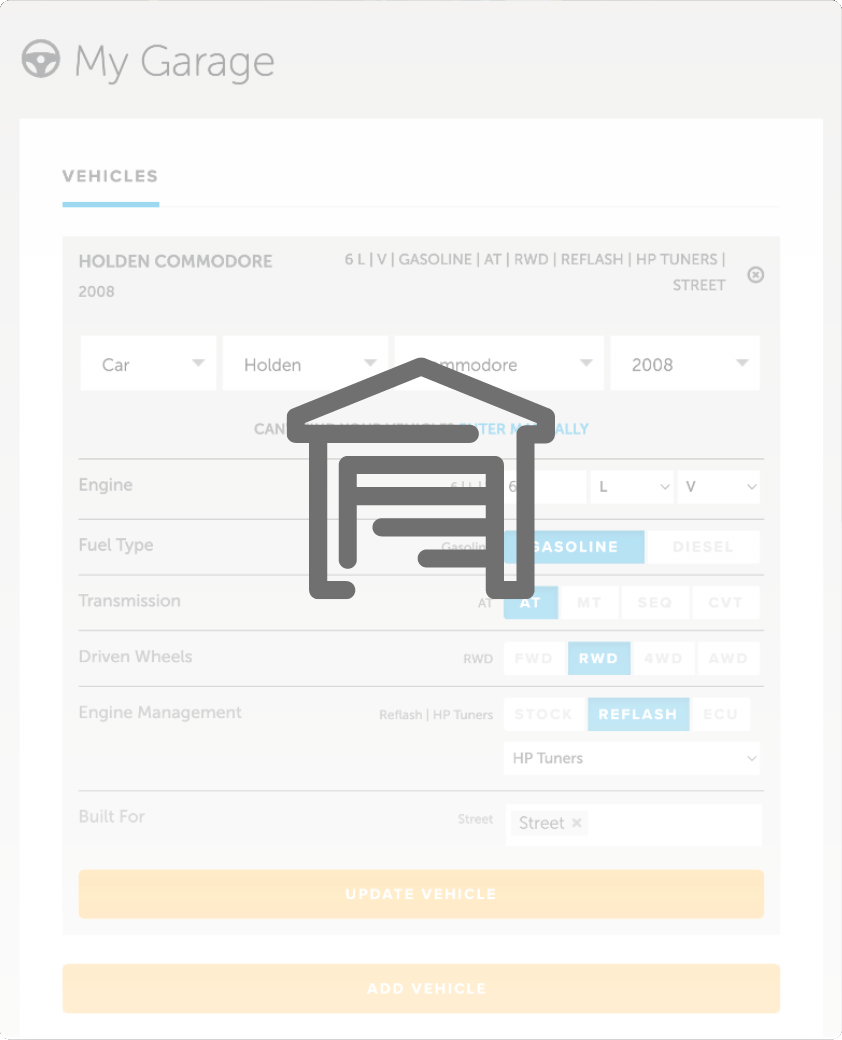| 00:00 |
While the previous module was all about tuning when shifts occur and which gear to shift into, if you want to take your control adjustments a step further, some TCMs allow adjustment of the shift process itself and the converter lockup clutch.
|
| 00:14 |
The level of control we have over the shift process varies greatly depending on the TCM and software we're working with, as well as the physical nature of the transmission itself.
|
| 00:25 |
While tuning the individual phases of a shift, including solenoid pressure profile, goes beyond the scope of this course, some TCMs with more simplified control offer the ability to request higher shift pressure and shorter shift times within reason without having to reconfigure dozens or more related tables.
|
| 00:45 |
Since torque converter clutch control is more straightforward and commonly adjusted, I'll cover that first.
|
| 00:51 |
The best way to start is by looking through tuning software for a TCC for short.
|
| 00:59 |
If that can't be located, the next place to look is in the torque converter section.
|
| 01:05 |
Usually we're looking for tables which have an accelerator pedal or throttle angle axis and an axis for gear numbers.
|
| 01:13 |
The Z data is typically vehicle speed or output shaft speed.
|
| 01:18 |
Speed values generally increase as the accelerator pedal or throttle position axis value increases.
|
| 01:25 |
Often there will be multiple tables to allow for different behaviors in each drive mode.
|
| 01:29 |
As we poke through the tables, note the data in each drive mode isn't necessarily unique.
|
| 01:35 |
Often there's a lot of similarity.
|
| 01:37 |
When we get into the main converter clutch engagement table for a given mode, as we found during shift schedule tuning, sometimes an excessively high speed is used to avoid a behavior.
|
| 01:49 |
If we see the vehicle speed to apply the torque converter clutch is 250 miles per hour in first gear, usually first gear can't achieve that speed.
|
| 01:58 |
So, the OE calibrator has chosen the unachievable 250 miles per hour to prevent converter lockup in first gear.
|
| 02:06 |
Just like in shift schedule tuning, using a high speed to disable TCC engagement won't always be that blatantly obvious.
|
| 02:15 |
For example, perhaps third gear is set to enable the converter clutch at 30 miles per hour at light throttle and values progress upwards to an engagement speed of 60 miles per hour at half throttle.
|
| 02:27 |
Then at 100% throttle, the TCC lockup speed is 90 miles per hour.
|
| 02:32 |
If you're unsure whether you can reach 90 in that gear, do the math or use your spreadsheet to confirm.
|
| 02:39 |
In this case, let's say we've done that and the vehicle tops out at 80 miles per hour in third gear.
|
| 02:46 |
If no other TCM logic is at play, flooring the vehicle in third gear would never get to 90 miles per hour, so the converter clutch wouldn't lock up.
|
| 02:56 |
But at half throttle, at 60 miles per hour, the TCC would lock up.
|
| 03:02 |
Let's say we'd prefer if the TCC doesn't lock at anything over about 40% throttle.
|
| 03:08 |
In that case, we take the minimum vehicle speed for lockup in cells associated with throttle of 40% or greater and set the speed to a value that's higher than what's achievable in that gear.
|
| 03:21 |
In this instance, I like to use a single large speed value in any cell where I want to avoid lockup.
|
| 03:27 |
That way it's really easy to recognize even if I come back to the project years later.
|
| 03:33 |
Of note here, we're talking about requesting lockup over 40% throttle, but what if the TCC had already locked up before we went over 40% throttle? Perhaps we're going 35 miles per hour in third gear at 20% throttle and the converter is locked up because that does meet the lockup conditions.
|
| 03:53 |
Then we apply more throttle, so now we're at 50% throttle.
|
| 03:58 |
Depending on the system we're working with, the TCC may remain locked when conditions to apply the clutch are no longer met, but the conditions for the TCC to release are not met either.
|
| 04:11 |
Aside from the speed-based TCC release tables, sometimes there are separate values or tables which override main tables and unlock the torque converter clutch over a certain accelerator or throttle position.
|
| 04:26 |
This may be called release TPS or max throttle for lockup or similar.
|
| 04:31 |
If they're set to 100% or more, they're disabled, but we can set them lower than 100% if one of our goals is keeping the converter unlocked during high throttle driving.
|
| 04:43 |
On a related note, sometimes the apply and release speeds are different portions of the same table.
|
| 04:50 |
Alternatively, sometimes apply and release speeds each have their own tables.
|
| 04:55 |
I've talked about some situations where we may want to unlock the converter at high throttle, but in some cases it's beneficial to do the opposite and lock the converter at high throttle.
|
| 05:07 |
Much like shift scheduling, many of us are more used to thinking of engine speeds we want something to happen at rather than a vehicle speed or output shaft speed.
|
| 05:17 |
With that in mind, it may be easier to choose approximate engine speeds you want to lock the converter at and then use a spreadsheet to calculate the vehicle or output shaft speed in each gear where that would occur and then enter those values.
|
| 05:34 |
For example, let's say we want the converter unlocked until about 4000 rpm and then we want it locked up as engine speed goes beyond that.
|
| 05:44 |
As we calculate the vehicle or output shaft speed to enter in our lockup table to achieve that, remember when the converter is slipping, there isn't a direct correlation between engine and vehicle or transmission output speed.
|
| 05:58 |
Perhaps start with a vehicle or output shaft speed associated with 3800 rpm and then test.
|
| 06:04 |
We may find when the engine hits around 4200 rpm, the vehicle reaches the speed we've set for lockup and by the time the clutch locks up, rpm drops to about 4000 rpm.
|
| 06:15 |
If lockup occurs too soon or too late, meaning at too low or too high an engine speed, we can tweak our lockup vehicle or output shaft speed value until we get the desired effect.
|
| 06:28 |
We may find the converter slips more in some gears or others.
|
| 06:33 |
You may also find you prefer to lock up sooner in lower gears versus higher ones or vice versa.
|
| 06:40 |
Ultimately, the choice is yours to suit your needs and with these simple adjustments, we can make it happen.
|
| 06:47 |
Lastly, minimum speed for lockup and speeds below which clutch release is commanded are sometimes calibrated separately as fail safes to avoid stalling the engine by having the converter locked at low engine speed.
|
| 07:00 |
Next, let's go over some basic adjustments to shift times.
|
| 07:04 |
Some TCMs have desired shift time tables where you can shorten or lengthen shifts.
|
| 07:10 |
By altering the shift time, you can also impact shift feel.
|
| 07:15 |
If you're trying to make a shift quicker, keep in mind there are physical limitations to what's possible, so be careful not to get too greedy.
|
| 07:23 |
For example, if the briefest factory shift takes 0.3 seconds, a shift time of 0.1 seconds, which is one-third of the typical time, perhaps isn't reasonable on that hardware.
|
| 07:35 |
To get a feel for what the OEM decided is reasonably achievable for a particular piece of equipment, we can review shift times in the sportiest mode and towing mode if present.
|
| 07:47 |
The shortest shift times we find in the stock tune should be doable and perhaps we can go a little shorter too.
|
| 07:54 |
For example, if a normal shift mode has a shift time of 0.7 seconds at low torque and sport mode has a shift time of half that at 0.35 seconds, it's safe to say the transmission is capable of a 0.35 second shift.
|
| 08:10 |
Now, it's a matter of deciding what we want.
|
| 08:12 |
Perhaps 0.7 makes the shift feel slow, sloppy, and too soft.
|
| 08:17 |
By simply changing that shift time to 0.5 seconds will both shorten the shift and potentially make it feel firmer by the seat of our pants.
|
| 08:27 |
Conversely, if we notice sport mode is set up to shift at 0.35 seconds regardless of torque output, but we like how normal mode is less firm during gentle driving and more firm during aggressive driving, we could lengthen the shift times at low torque output in sport mode to be closer to the normal shift mode times.
|
| 08:49 |
Perhaps 0.5 seconds at 50 foot-pounds of engine torque, 0.5 at 100 foot-pounds, and then back to the more sporty 0.35 seconds at 150 plus foot-pounds.
|
| 09:02 |
By working within the OEM time range, we can generally make quick adjustments without getting ourselves into trouble.
|
| 09:08 |
If we do decide to risk attempting shift times shorter than anything that we used in their calibration, we may find one of a few things happen.
|
| 09:18 |
First, nothing may change at all.
|
| 09:20 |
This may be due to a number of factors ranging from physical limitations of the mechanical or electrical components, to a hidden minimum shift time function we can't see in our software, to a need for greater clutch or holding component force.
|
| 09:35 |
What I mean in that last example is if we request a quicker shift, but the clutch or holding device doesn't receive enough pressure to grab that much torque and hold it quickly, the shift won't truly complete until the clutch is able to hold.
|
| 09:51 |
In this instance, we may need to combine a reduction in shift time with an increase in shift pressure, and I'll go over that soon.
|
| 09:59 |
Another possible outcome is perhaps the shift won't be as short as we requested, but is still a little quicker than it used to be without ill effects or other adjustments being required.
|
| 10:10 |
And of course, maybe the transmission will attempt something it's not capable of, resulting in damage.
|
| 10:16 |
For this reason, reducing desired shift time to something less than the OEM includes in their calibration is absolutely an at-your-own-risk exercise.
|
| 10:27 |
While reducing shift times may cause the TCM to alter its clutch pressure application to try to meet our demands, simple TCMs often have clutch pressure tables per gear, which allow us to set a base level of clutch pressure for a given amount of torque applied.
|
| 10:44 |
It may be engine torque or input shaft torque, but generally as torque increases on the axis, we'll find target pressure increases in the tabled Z data, because the clutches will need more force to grab and hold higher levels of torque.
|
| 11:00 |
If we find a bit more pressure is needed to reduce slip under a certain shifting condition, perhaps allowing the shift to complete a bit quicker, or simply wanting the shift to feel more firm, we can increase the pressure in that area of the table.
|
| 11:16 |
Making a relatively small adjustment, storing changes, testing, and reviewing a data log to see what happened is an iterative process.
|
| 11:26 |
Feeling it in the seat of our pants is also important as you strive for a calibration that performs well and makes you happy.
|
| 11:34 |
From there, we can continue adding pressure until we're happy with the result.
|
| 11:39 |
Keep in mind, there are usually maximum clutch and line pressure values that will cap what's possible.
|
| 11:47 |
Also remember that line pressure supplies the clutch system, so target line pressure should be greater than desired clutch pressure.
|
| 11:55 |
While firming up shifts is more common, one use case where we may want to soften shifts comes after upgrading to high count clutch packs.
|
| 12:04 |
When working with aftermarket higher count clutch packs, the amount of fluid pressure required to achieve a given total clamping load decreases as compared to what the stock clutch pack required.
|
| 12:16 |
In order to achieve a similar shift feel with a higher count clutch, we need to reduce shift pressure and apply more similar clamping.
|
| 12:25 |
For example, before we upgrade from a four plate to a six plate clutch, we can data log driving the vehicle, review behavior, and take note of how it feels.
|
| 12:36 |
Then upgrade the clutches and start reducing clutch pressure until log shift behavior is acceptable in terms of slip but the driving experience is comfortable again.
|
| 12:47 |
It likely won't feel exactly the same as the stock clutch even after adjustment, but we can often get close and have the benefit of higher torque holding capacity with reasonable drivability.
|
| 13:00 |
Adding plates causes a predictable increase in clutch holding capacity proportional to the number of plates, so the amount we can reduce shift pressure is usually a pretty consistent percent change across the full operating torque range.
|
| 13:14 |
Because the coefficient of friction of a clutch material is a significant factor and clutch manufacturers generally don't provide this data, rather than trying to calculate an exact pressure change required without a key piece of info, I suggest a pragmatic iterative approach to pressure reductions after clutch count upgrades.
|
| 13:36 |
Making small changes does lead to more iterations being required, but small changes are less likely to cause damage.
|
| 13:44 |
There is no best step size, but iterating by changing shift pressure say five percent at a time is a decent compromise of tuning time and safety.
|
| 13:53 |
If at any point a pressure reduction from stock values causes excessive clutch slip or shift time, undo the last change then retest.
|
| 14:04 |
If all is okay again after reverting that last five percent pressure reduction, then we can either leave the tune that way or if we'd like to give ourselves more of a safety margin, which I generally suggest, we can add another five percent back in.
|
| 14:19 |
At that point we know we're at least five percent and potentially up to about nine percent pressure from the point of slip under your test conditions.
|
| 14:27 |
We can certainly try to tune values even more precisely leaving less margin of safety, but keep in mind clutch clamping is relatively variable.
|
| 14:37 |
Transmission fluid and clutch friction material temperature, fluid contamination, and wear over time are just a few variables that can change how much pressure is required for a clutch to behave as we'd like it to.
|
| 14:51 |
Erring on the side of a little extra pressure can save tuning time and avoid excess friction material wear.
|
| 14:59 |
Like most things, we still want to keep pressure within reason.
|
| 15:03 |
I'm definitely not suggesting that we should crank pressures way up under all conditions so our clutches last forever, but rattle our teeth out of our heads from harsh shifts.
|
| 15:13 |
As we're softening pressures, keep in mind the factory values in these tables may not have left the same margin of safety to slip in all cells.
|
| 15:23 |
Testing over a broad range of conditions will give us a higher level of confidence that our settings are appropriate.
|
| 15:29 |
As we're reducing shift pressure, if the highest torque axis value isn't adjustable and it's less than the peak torque our application can create, we generally wouldn't want to reduce pressures in that final column.
|
| 15:44 |
For example, if the highest axis value is 500 foot pounds and our engine makes 800 now, which is why we upgraded the clutches, we likely want to leave that final column set for max safe clutch pressure.
|
| 15:59 |
At peak torque, we're generally less concerned with smoothness and more concerned with not wrecking the clutches, so this may be a compromise we have to make.
|
| 16:08 |
At wide open throttle, some TCMs use other tables to determine shift times and pressures anyway, but I still feel it's good practice to account for potential full torque application in the main clutch pressure tables.
|
| 16:22 |
If on the other hand, the torque axis values are adjustable, then we can rescale these tables to accommodate torque beyond the factory settings.
|
| 16:32 |
Anytime we have to rescale a table, I find it helps to view the data in graphical form.
|
| 16:37 |
This lets us see whether the data progresses in a linear fashion and then remove intermediate data points in those linear areas.
|
| 16:47 |
For example, if the shift pressure ramps up linearly from 50 to 100 psi at 40 to 80 foot pounds, I don't really need an in -between data point at 60 foot pounds for 75 psi because removing that data would simply cause the TCM to interpolate between the 40 and 80 foot pound data points and calculate a pressure of 75 psi anyway.
|
| 17:13 |
Then I can copy my 80 foot pound data and everything to the right of it and paste it one column to the left.
|
| 17:21 |
Do the same with the axis values and now the highest axis value can be repurposed for a higher range.
|
| 17:28 |
Back to the torque converter clutch.
|
| 17:30 |
Unlocking the TCC during shifts reduces shock loading of drivetrain components and smooths shifts feel.
|
| 17:38 |
So, unlocking it during shifts is often desired in performance and non-performance settings and there are often tables or values meant to ensure this happens.
|
| 17:48 |
That said, there are some applications which will keep the converter locked during shifts and if we want to unlock the converter instead, we may have the option to do so.
|
| 17:59 |
Some systems will also let us adjust the delay time before re-locking the converter after a shift completes.
|
| 18:07 |
Typically the delay time desired will be longer in low gears and shorter in high gears.
|
| 18:12 |
Separate delay times may be tunable for up and down shifts and this is one of those areas where driver preference is key.
|
| 18:21 |
What one person likes, another may not.
|
| 18:23 |
So, we should try different delay times and see what's best.
|
| 18:27 |
In the next module, I'll review wide open throttle specific behavior relating to shifting.
|
| 18:33 |
But first, let's quickly go over the main points relating to partial throttle.
|
| 18:39 |
When tuning torque converter lockup, be sure to avoid keeping it locked up below the engine speed for stable operation to avoid stalling.
|
| 18:49 |
Research to find out if the lockup clutch can handle the max torque your engine can output.
|
| 18:56 |
If it can't, tune the TCM to avoid attempting lockup beyond the limit of the TCC.
|
| 19:03 |
Unachievably high vehicle or output shaft speeds can be entered to avoid converter lockup, just like they're used to avoid shifts in the shift schedule tables.
|
| 19:13 |
Remember that once lockup conditions are met and the converter locks, it may remain locked after conditions to lock up are no longer met.
|
| 19:22 |
This is because some systems have separate conditions that must be met to release the lockup clutch.
|
| 19:29 |
Like most things, recording behavior before and after making small iterative changes allows us to observe changes in log data and feel and determine trends.
|
| 19:41 |
If we make a small change which has an undesirable effect, the result is likely far less concerning than if we had made a big change.
|
| 19:50 |
Adjusting shift duration within the range used in the stock calibration will typically result in acceptable behavior.
|
| 19:58 |
Adjusting shift times to be shorter than the shortest time used in the stock calibration may or may not result in shorter shifts, but testing a small change may be worth the risk in a racing environment.
|
| 20:12 |
Increased shift pressures may be required to accommodate quicker shift times.
|
| 20:17 |
Conversely, if you request a slower shift but clutch pressure target is very high, the shift may still complete quickly.
|
| 20:27 |
The installation of clutches with more discs or larger diameter will cause a linear improvement in clutch holding capacity and will cause firmer shifts for a given clutch pressure.
|
| 20:40 |
Careful reduction of partial throttle clutch pressures to regain smooth shifting during gentle driving is recommended after this sort of clutch upgrade.
|
| 20:51 |
Unlocking the torque converter clutch during shifts is generally desirable to reduce drive train shock and can avoid loss of grip between the tires and the road.
|





